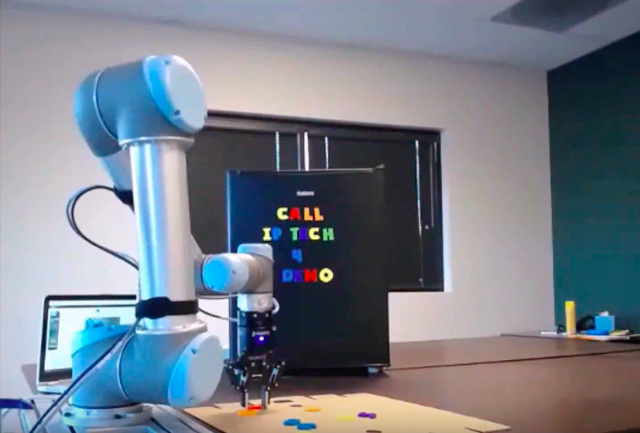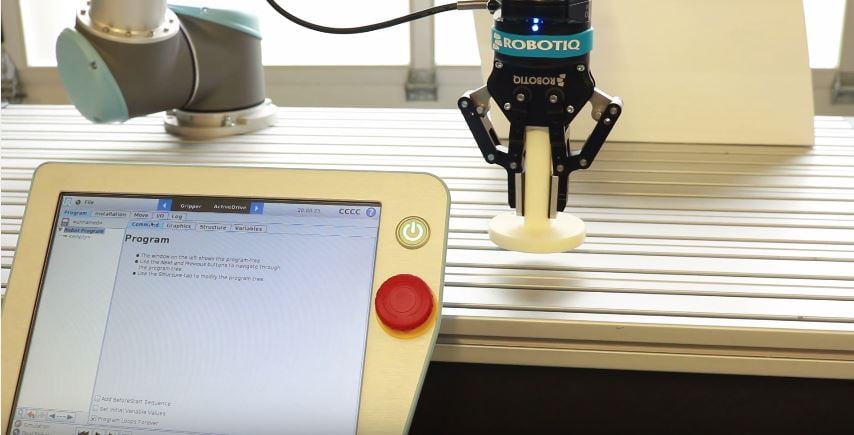How Integrators Evaluate a Robotic Manipulation Process?

Posted on May 05, 2015 2:10 PM. 5 min read time
Year round, various factories are searching for new ways to increase production, remove labor intensive tasks and have a better product quality consistency. Robot integrators are there to provide solutions for these various projects. The following article contains a step-by-step description and tips on how robot integrators might tackle robotic manipulation projects. Use these tips to manage properly the implementation of your robotic cell.
1. Analyze the process

The first point is really identifying where a robot could be introduced into the production line. To do so, you must look at specific manipulation tasks for the production line where a robot could increase production, ensure product quality or remove labor intensive tasks. When looking at the production line, people have a tendency to look at tasks where some sort of trend or repetition can be observed. These are often the best candidates for automation. However, with collaborative robots now available, you have to keep your thoughts flexible. Today’s automation is not always about repetition, but also about flexibility. For example, if you have several different tasks where a robot could be used to improve production, but you have a long payback time because the robot would not work all-day-long if assigned only to one of these tasks, then you should consider using an easily programmable, easily movable and flexible collaborative robot. Add an adaptive robot gripper to this industrial robot such that it can manipulate all the required components with no additional tool setups and you are basically cruising. So keep in mind that repetition is key for automation and flexibility can shorten your payback time in automating repetitive tasks.
2. Evaluate the potential solutions
Once you have targeted a specific task that can be robotized, you must sit down with your team and brainstorm potential solutions. Don’t make the mistake of sitting by yourself to work out the entire solution. Your colleagues probably come from different backgrounds and have different expertise, so you will be able to brainstorm more ideas together than on your own. You will also be less likely to forget important details when many people are involved in the brainstorming stage of the project. This will also help in finding the best cost effective solution for the application. Do not forget to include people that will manage this cell in the brainstorming process. After all he is the one who will end up working with the robotic cell.
3. What are your options?
Once the best solution for the problem has been found, I suggest breaking down the proposed solution into various options. Starting from the must use components and adding more complex options to it. Doing it this way will help you understand the cost and added value of different options. This gives you an advantage over integrators bidding full turnkey solutions where it is harder to see the value of each added option. For example, adding 3D vision to the system instead of using 2D vision will most likely increase the cost of the project. However if the 2D vision solution allows you to pick 98% of the parts, the client may decide to keep the 2D solution and find a less expensive alternative for the remaining 2%.
4. Re-iterate your ideas
For the integrator once you get the job, you want to make sure you brainstorm again to see if there are new potential solutions available since you embarked on this project. Sometimes there is a time lapse between the first brainstorming session and the time when the project starts. New technologies may be available for the project. However, make sure you respect your budget and get stakeholders approval.
5. Think outside the box, or remain conservative
Next step, the project manager and his/her team start working on design, components selection, programming and so on. The sale of custom built robotic solutions really fluctuates year round. Custom solutions are also more expensive to support and more prone to budget estimation errors if the components selection was initially done poorly. You want to keep things as simple as possible. You also do not want to reinvent the wheel by designing components that can be bought off the shelf. Furthermore, I have noticed that not much time is spent on component selection; like pneumatic vs. electric grippers. People often want to stay with what they know best, so if the client is using pneumatic they will probably choose a cheaper pneumatic gripper and spend some time designing the gripper on their own.
For the integrators repeating the solution is really the key for making a profit as a custom robotic cell integrator. So do the same to have quick and repeatable integration. For example, if you stick to the same brand of components (like always using Company-X cameras, Company-B flowmeters and so on); if you use the same communication protocol in each cell; if you have a tooling design that can be repeated for different applications or if the client orders the exact same cell more than once, then each repeat will reduce design, integration, programming, troubleshooting and integration time. So, if you repeatedly use Robotiq’s Grippers by just designing new fingertips to fit new applications, you get repeated programs to control the Gripper, you get repeated electrical drawings, repeated troubleshooting solutions, which become easier to solve over time, and you can easily build your own custom fingertip library. As the library grows, the higher the chance is of already having a design that fits a new application that you want to bid on. This is a time saver and saving time means dollars saved.
 6. Integrate the solution
6. Integrate the solution
Once design is over, it is time to install the cell and provide training. Do not underestimate the time for training in your initial calculation. The better the training, the less technical support you will have to provide later on. For training, make sure you target the proper personnel. You want to share the relevant information about the tasks with the right operator or technical personnel.
7. Information and training
Even though training and installation is now over, the project is still not done. The learning curve for a new robotic cell in a plant really depends on the complexity of the project and the level of automation expertise already in-house.
There are not really any tricks to calculating the amount of support that will be needed once the new cell is up and running. The key points for this are:
-
A. Make sure the support and warranty policy are clear.
-
B. Make sure programming and design is thorough. Avoid rounding corners to save a few hours that will have to be patched later on.
-
C. Log bugs and problems encountered. Tackle them as a team to make sure the solution implemented does not create other problems and that it corrects the problem ‘permanently’.
8. Feedback
A new robotic cell will need less support over time. Make sure you keep in contact and follow up a few months after implementation to see that everything’s running smoothly. You will see, end users will call ASAP when problems arise but won’t call when everything’s going great. It is nice to know if the end user is satisfied and do not hesitate to spread the news across your team! This is a great source of motivation.
9. Close the loop
The project now over, it is time to talk about it with your team. How did everything go? Did any components fail or did something work really well? What might have eased integration? What mistakes were made and also what good solutions did we find… etc? These questions are important for the next project and your team will greatly benefit from this!
This was a summary of some key points to look at when integrating a robotic manipulation cell project or actually any robotic cell integration in general. Working as a team combining the strengths of each member while maintaining a mutual trust relationship will serve you well. To help in the decision making process and determine if a robotic project is suited for the application you are analyzing, take a look at the link below for our free eBook on how to calculate the ROI for a robotic cell.

 6. Integrate the solution
6. Integrate the solution






Leave a comment